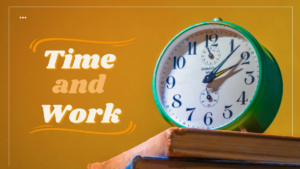Quantitative Aptitude For SBI PO Exam 2018 (Week-08)
Directions (1-5): The following table shows the total number of people of a city in different years and percentage of them who were shifted to other places due to natural disasters. Table also shows the ratio of male to female in shifted people.
Note: Some data are missing if required calculate it than proceed.
Q1. If in 2005 total 6400 females shifted to other places, then approximately what percent of people shifted to another place in 2005.
(a) 60%
(b) 55%
(c) 65%
(d) 75%
(e) 50%
Q2. If no. of people who were shifted in 2006 is 66 2/3% more than the no. of males who were shifted in 2005 to other places. Find the total population of city in 2006. (no. of males shifted in 2005 = 9600)
(a) 35,000
(b) 30,000
(c) 40,000
(d) 45,000
(e) 50,000
Q3. If difference between male and females who were shifted to other places in 2007 was 1440 then find the total population of the city in 2007.
(a) 24,000
(b) 26,000
(c) 28,800
(d) 22,000
(e) 20,400
Q4. If no. of males who were shifted to other places in 2008 was 200% more than that of females who shifted in the same year. Find the no. of such females who were shifted to other places in the year 2008.
(a) 3600
(b) 4095
(c) 4240
(d) 4190
(e) 3995
Q5. If no. of females who were shifted in 2009 is 100/3% of total no. of shifted population to other places in the same year then find the total no. of population of city in 2009. (total females who were shifted in 2009 is 4320).
(a) 44600
(b) 48000
(c) 45000
(d) Can’t be determined
(e) None of these
Q6. Raghav studies about Hadappa culture and finds that 33 ⅓% people were interested in hunting. Three fourth of remaining were interested in inventions and rest were interested in music and other activities. The ratio of male to female who were interested in music and other activities was 5 : 4. If total population of Hadappa culture was 27000 then find the total number of males who were interested in music and other activities.
(a) 2000
(b) 2400
(c) 2500
(d) 3000
(e) 3200
Q7. The working efficiency of three friends P, Q and R is in the ratio of 3 : 4 : 5. Q can do three fourth of a work in 18 days alone. If all of them work together the same work is completed in how many days?
(a) 6 days
(b) 8 days
(c) 10 days
(d) 12 days
(e) 14 days
Q8. The population of a city increases in first year at a rate of 10%. In second year it decreases by 15% and in third year it again increases by 20%. If population of city after second year is 37,400 then find the initial population of city.
(a) 40,000
(b) 42,000
(c) 45,000
(d) 30,000
(e) 36,000
Q9. In how many different ways the letters of the word ‘KROASHIAN’ can be arranged such that ‘SH’ never come together and ‘K’ and ‘N’ always come at end places?
(a) 3240
(b) 4230
(c) 3640
(d) 4320
(e) 4020
Q10. A trader bought onions at a rate of Rs. 20 per kg. He bought 2.4 quintal onions out of which 16 ⅔% onions were rotten. To overcome this, he sold the remaining onions at a price of Rs. 30 per kg. Find his overall profit/loss percentage in business.
(a) 50%
(b) 25%
(c) 40%
(d) 20%
(e) 30%
Directions (11-15): In the following number series, find out the term which does not follow the usual pattern.
Q11. 1.5, 4, 19, 119, 959, 9600
(a) 19
(b) 9600
(c) 119
(d) 959
(e) 4
Q12. 4.5, 19, 37.5, 72, 142.5, 278
(a) 278
(b) 142.5
(c) 72
(d) 37.5
(e) 19
Q13. 48, 96, 96, 48, 192, 24, 380
(a) 48
(b) 192
(c) 24
(d) 380
(e) 96
Q14. 142, 1000, 62, 214, 14, 6
(a) 62
(b) 214
(c) 1000
(d) 14
(e) 6
Q15. 111, 136, 185, 266, 388, 556
(a) 388
(b) 136
(c) 185
(d) 266
(e) 556






 Quadratic Equation Questions for SBI PO ...
Quadratic Equation Questions for SBI PO ...
 Time and Work Formula, Concept & Apt...
Time and Work Formula, Concept & Apt...
 Simplification Questions for SBI PO Exam
Simplification Questions for SBI PO Exam




